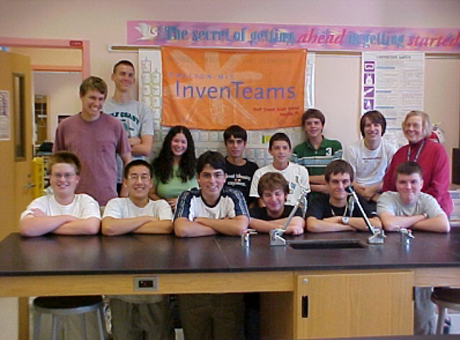Gulf Coast High School InvenTeam
Naples, Florida
Poor indoor air quality has often been a cause of health problems. Air-born particles from dust and chemical preservatives can cause respiratory dysfunctions, such as asthma and allergies, for many people. Student Genevieve Garris had realized this problem and introduced it to her team, since her household chore was to clean the fans. The Gulf Coast High School InvenTeam decided to create a fan that uses electrostatic air filtration technology to capture harmful particles and allergens from the air and re-circulate clean air to help alleviate respiratory illnesses. The team created two models of the PHAN (Poly Hybrid Air Neutralizer). The first design is composed of a stainless steel wire and copper plate on the leading edge of the fan blade. A steel slip ring on the center fan console charges the wire. This creates an electric field perpendicular to a copper plate, which is placed on the leading edge of the fan blade below the ionizing wire. The fan blade rotates, and as air flows past the wire, particles in the air are charged opposite that of the copper plate. This causes them to stick to the blades, allowing clean air to pass through and re-circulate. The team also created a second model that uses off-the-blade technology. As the students embarked upon their design process they were cognizant of previous patents for similar fans. The team split into two groups, the Omega team and the Sigma team. The Omega team focused on the slip-ring model, and the Sigma team focused on the off-the-blade model. Two MIT alumni mentors attended several meetings; one also assisted the students in connecting the power source to their designs. The students arrived at their final concept by frequently disassembling things and experimenting. After they took apart an Ionic Breeze fan, they discovered a higher volt capacity was beneficial. They consulted specialists at fan stores; and furthermore, they studied blade speeds, amount of air circulated, and relationships among the blade size, weight, motor size and motor efficiency. The team discovered that a more powerful motor and longer fan blade resulted in fewer rotations per minute and greater volumes of air circulated. The Gulf Coast High School InvenTeam hopes to improve the outward appearance of the fan. They also would like to experiment with smaller particles and make the blades easier to clean. The team hopes to receive funding to further experiment on mold and bacteria.


